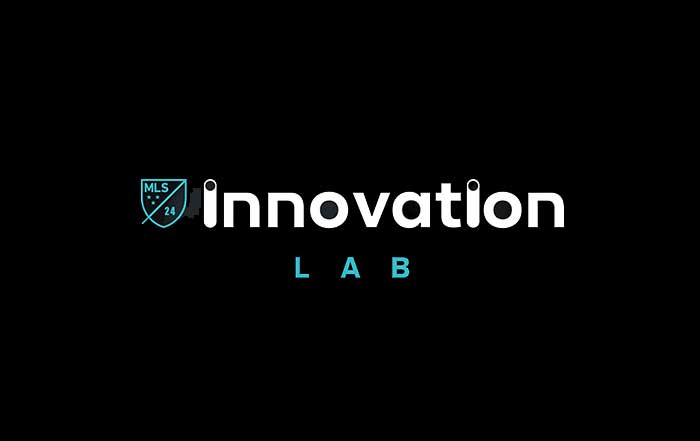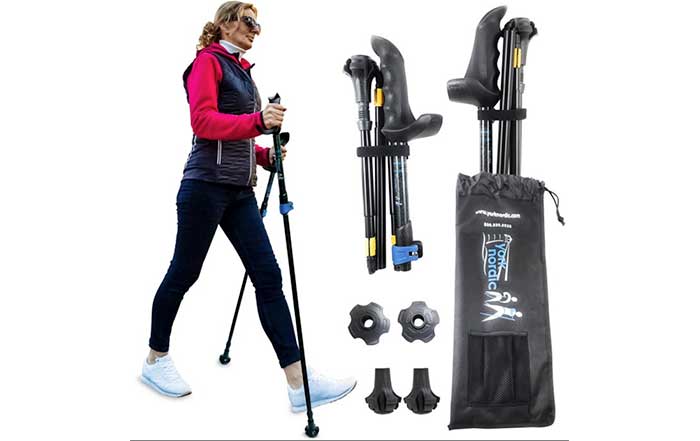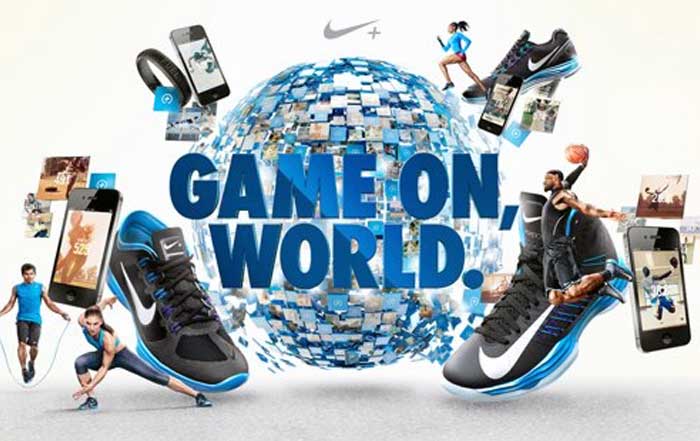Sports and fitness coaching in Australia has evolved into one of the most dynamic and influential sectors of the global health and wellness industry. Known for its sporting culture, outdoor lifestyle, and emphasis on high-performance training, Australia has long been a breeding ground for elite athletes, fitness entrepreneurs, and innovative sports science research. By 2025, the role of sports and fitness coaching has expanded far beyond traditional training, encompassing areas such as digital fitness, wellness integration, youth development, and global sports tourism. This comprehensive exploration examines the rise of coaching in Australia, the business opportunities shaping its future, and the broader cultural, economic, and technological implications that position the nation as a leader in the global sports landscape.
The Historical Evolution of Coaching in Australia
Australia’s identity has always been closely tied to sport. From the early 20th century dominance in cricket and swimming to the hosting of iconic events such as the 2000 Sydney Olympics, the country has developed a culture where athletic achievement is both celebrated and institutionalized. Coaching, once seen as a supplementary activity, has grown into a professionalized industry supported by universities, government funding, and private investment. Organizations such as the Australian Institute of Sport (AIS) have been instrumental in developing a national coaching framework, combining science, psychology, and technology to produce world-class athletes.
This structured approach has filtered down into community sports and recreational fitness, ensuring that even at grassroots levels, Australians have access to trained professionals who understand biomechanics, nutrition, and mental performance. The result is a nation where coaching is not simply about teaching skills but about fostering long-term participation in health and sport.
The Business of Fitness Coaching in 2025
Australia’s fitness industry is worth billions annually, with gyms, boutique studios, online platforms, and personal training businesses flourishing across the country. Fitness coaching has become a viable entrepreneurial path, supported by consumer demand for personalized health solutions. From F45 Training, which began in Sydney and has since become a global franchise, to emerging digital coaching startups offering app-based programs, Australia has proven its ability to scale innovative fitness models for international markets.
According to IBISWorld and other industry sources, the personal training market in Australia has seen consistent growth, driven by rising health awareness, increased disposable incomes, and a shift towards preventative healthcare. Consumers are no longer seeking generic workout plans; they are looking for coaching that integrates fitness with nutrition, mental well-being, and lifestyle design. This holistic approach reflects broader global wellness trends and places Australian coaches in a strong position to attract both domestic and international clients.
For readers of SportyFusion Business, this signals enormous opportunities for investment, franchising, and cross-border collaborations between Australian fitness companies and global markets.
Technology and Digital Transformation in Coaching
The integration of technology has redefined what it means to be a coach in 2025. Australian companies and universities have been early adopters of wearable technology, performance analytics, and virtual training platforms. Athletes and everyday users alike now rely on advanced heart rate monitors, GPS trackers, and AI-driven performance feedback systems to optimize their training. Digital platforms allow coaches to manage clients across time zones, breaking the barriers of geography and creating new opportunities for scaling businesses internationally.
Apps like MyFitnessPal, Strava, and homegrown Australian platforms integrate seamlessly with wearables, enabling coaches to design real-time adaptive training plans. Virtual reality training environments, once experimental, are now being used in elite athlete preparation, rehabilitation, and even recreational fitness, making Australian sports tech a global export industry.
For readers following SportyFusion Technology, this digital revolution highlights how Australian fitness coaching blends tradition with innovation, positioning itself at the forefront of global sports tech adoption.
Coaching Pathways: From Grassroots to Elite
One of the strengths of the Australian sports ecosystem is the clearly defined coaching pathway. Grassroots coaching in community clubs introduces young Australians to structured training, while school programs emphasize the role of physical activity in education. As athletes progress, they move into state-level academies and eventually national-level institutions such as the AIS. Along this pathway, coaches serve not only as trainers but also as mentors, guiding athletes through psychological, social, and career challenges.
This structured approach has produced global stars in sports ranging from tennis and swimming to rugby and athletics. However, coaching is not limited to elite athletes. Fitness coaches working with everyday Australians are increasingly adopting the same performance frameworks once reserved for Olympians. The democratization of high-performance knowledge ensures that anyone—from corporate professionals to retirees—can access evidence-based coaching tailored to their needs.
🏋️ Australian Sports & Fitness Coaching Evolution
Interactive Timeline: From Tradition to Global Innovation
The Global Appeal of Australian Coaching
Australia has become an attractive destination for sports tourism, combining world-class coaching with iconic natural landscapes. Tourists travel to surf camps in Byron Bay, participate in fitness retreats in Queensland, or attend high-performance training camps in Melbourne. The appeal is enhanced by Australia’s reputation for safety, hospitality, and outdoor living.
International athletes and teams often train in Australia during off-seasons, taking advantage of favorable weather, advanced facilities, and the expertise of Australian coaches. This not only drives revenue through tourism but also strengthens the global reputation of the nation’s sports coaching industry.
For readers exploring SportyFusion World, the integration of sports, tourism, and coaching showcases Australia’s ability to merge lifestyle branding with high-performance training, making it an attractive model for other regions.
Challenges Facing Sports and Fitness Coaching
Despite its successes, the Australian coaching industry faces several challenges in 2025. Rising operational costs, particularly in urban centers such as Sydney and Melbourne, put pressure on smaller studios and independent coaches. Competition is fierce, with an oversaturation of gyms and digital platforms making differentiation essential. The mental health of coaches themselves is also a growing concern, as the demands of balancing entrepreneurship, training schedules, and client expectations can lead to burnout.
Moreover, the ongoing debate about inclusivity and accessibility in sports highlights the need for coaching models that serve not only elite or affluent clients but also marginalized communities. Indigenous Australians, rural populations, and economically disadvantaged groups often face barriers in accessing high-quality coaching. Addressing these gaps will be critical for the long-term sustainability of the industry.
The Role of Government and Institutions
The Australian government, alongside organizations like Sport Australia and the AIS, continues to invest heavily in coaching development. Initiatives such as the National Coaching Accreditation Scheme (NCAS) provide structured pathways for coaches to gain qualifications, ensuring a high standard of professionalism across the industry. In addition, funding for sports research ensures that coaching methods are informed by cutting-edge science.
Policies promoting physical literacy, school sports participation, and preventative healthcare all indirectly strengthen the coaching sector. By recognizing fitness and coaching as integral to national well-being, policymakers are ensuring that the industry remains both a cultural priority and an economic driver.
Sports Coaching and Corporate Wellness
Another growth area in 2025 is corporate wellness. Australian companies increasingly recognize the value of integrating fitness coaching into their employee programs. From on-site training sessions to digital fitness subscriptions, organizations are investing in coaching to improve productivity, reduce healthcare costs, and enhance employee satisfaction. This corporate alignment creates new opportunities for coaches to move beyond gyms and into boardrooms, partnering with businesses to deliver long-term wellness outcomes.
Readers of SportyFusion Jobs can find valuable insights here, as the expansion of coaching into corporate wellness creates new career pathways and business models for fitness professionals.
Women in Coaching and Leadership
The rise of female coaches and leaders in the Australian fitness industry has been a defining trend of the last decade. More women are entering coaching roles across all levels, from grassroots programs to elite sports. Organizations are actively promoting gender equity, recognizing that diversity in coaching brings new perspectives and strengthens athlete development. Female-led businesses in fitness and wellness are flourishing, particularly in yoga, pilates, and holistic health coaching, creating an inclusive environment that broadens participation across demographics.
Environmental Sustainability in Coaching
Sustainability is no longer optional in the sports and fitness sector. Australian coaches and facilities are adopting eco-friendly practices such as solar-powered gyms, recycled materials in equipment, and low-impact outdoor training programs. Fitness tourism operators are also promoting environmental stewardship, combining sports retreats with conservation initiatives.
For readers following SportyFusion Environment, these practices underscore how coaching in Australia is not only about physical well-being but also about aligning with global sustainability goals.
Future Outlook: 2025 and Beyond
By 2025, sports and fitness coaching in Australia stands at the intersection of tradition and innovation. The nation’s legacy of producing world-class athletes is now matched by its capacity to scale fitness businesses globally, adopt digital technologies, and integrate wellness into all aspects of society. However, the future will demand ongoing adaptation. Coaches must embrace lifelong learning, expand their services into new industries such as healthcare and technology, and continue to make coaching accessible to all Australians.
For readers of SportyFusion Performance, this evolving landscape represents a chance to witness firsthand how coaching continues to redefine personal and collective performance, not just in sport but across all aspects of modern life.
Australia’s reputation as a sports-loving nation has matured into a global leadership position in sports and fitness coaching. The industry reflects the country’s cultural values, technological innovation, and commitment to health and sustainability. Coaches in Australia are more than trainers; they are educators, entrepreneurs, mentors, and innovators shaping the future of how individuals and communities engage with fitness.
As coaching continues to expand globally, Australia serves as both a model and a testing ground for new approaches, ensuring its continued relevance in the international sports and wellness conversation. For readers of SportyFusion, this story is not only about sports—it is about the future of health, performance, and human potential.
Case Study: F45 and the Global Expansion of Australian Coaching Models
Few stories illustrate the global impact of Australian fitness coaching better than the rise of F45 Training. Founded in Sydney in 2013, F45 pioneered a group-based, high-intensity training model that blended technology with community culture. Its digital scheduling system, video-guided workouts, and franchising strategy transformed it from a local Sydney studio into an international powerhouse with thousands of locations worldwide.
The success of F45 demonstrates how Australian coaching models can be scaled beyond national borders. The brand capitalized on Australia’s reputation for fitness and outdoor lifestyle, marketing a product that was aspirational yet accessible. By 2025, F45 continues to expand globally, adapting to post-pandemic consumer preferences with hybrid digital-physical memberships. Its model also inspired new Australian startups in boutique fitness, particularly in the fields of pilates, functional training, and wellness retreats.
This evolution shows how Australia’s coaching ecosystem is not just serving its domestic audience but actively shaping global fitness culture. Readers of SportyFusion Brands will see how brand-led coaching models from Australia continue to influence consumer choices across continents.
The Role of Universities and Sports Science in Coaching
Australian universities are global leaders in sports science research, providing an academic foundation that elevates coaching standards. Institutions like the University of Queensland and Deakin University offer specialized programs in exercise science, kinesiology, and sports management. These programs produce not only highly skilled coaches but also sports scientists who integrate evidence-based methodologies into training.
Collaboration between universities and organizations like the AIS ensures that research findings are rapidly translated into practical coaching applications. This science-driven approach has improved injury prevention strategies, enhanced athlete recovery protocols, and optimized performance across sports. The emphasis on biomechanics, physiology, and psychology has created a new generation of coaches who are both practitioners and educators.
Such academic-industry partnerships also serve as an export model, attracting international students and professionals to Australia to learn cutting-edge sports science and coaching practices. For readers of SportyFusion Training, this demonstrates how education and coaching form an interconnected pathway to global leadership.
Indigenous Coaching Programs and Community Impact
One of the most significant developments in Australian coaching has been the growth of Indigenous-led sports and fitness programs. Initiatives across rural and regional areas focus on creating opportunities for Indigenous Australians to become coaches, trainers, and leaders within their communities. Programs like the Clontarf Foundation combine education and sport, using coaching to build confidence, discipline, and pathways to employment.
Indigenous coaching models also integrate cultural perspectives into training, emphasizing connection to land, community, and holistic well-being. This approach resonates strongly with broader trends in wellness and sustainability, positioning Indigenous-led coaching as both socially transformative and globally relevant.
By 2025, government and private funding for Indigenous sports programs is increasing, recognizing their role in improving health outcomes and fostering leadership. The future of coaching in Australia will be incomplete without Indigenous voices, making inclusivity a central theme in the industry’s growth.
Fitness Tourism and the Australian Lifestyle
Australia’s natural assets—beaches, mountains, national parks—make it a natural destination for fitness tourism. From yoga retreats in Byron Bay to high-performance camps in Queensland, the blending of sport, leisure, and lifestyle has become a lucrative market. Tourists seek authentic experiences that combine structured coaching with outdoor adventure, wellness practices, and cultural immersion.
Fitness tourism is not just about holidays; it is about transformation. International visitors increasingly see Australia as a place to reset their health goals under the guidance of world-class coaches. The emphasis on sustainability—eco-lodges, low-impact adventure sports, organic nutrition—further enhances the appeal.
For global readers exploring SportyFusion Lifestyle, this highlights how coaching is not confined to gyms and stadiums but is integrated into broader lifestyle experiences that blend health, environment, and culture.
Emerging Technologies: AI, VR, and Data-Driven Coaching
By 2025, artificial intelligence has become a central tool in coaching. AI platforms analyze biometric data from wearables, predict fatigue patterns, and suggest optimal recovery strategies. Coaches use these insights to personalize training plans and maximize efficiency. Virtual reality training environments are now used not only in elite athlete preparation but also in consumer fitness, offering immersive workouts that simulate competition or outdoor environments.
Australian companies and research institutes are among the pioneers of these technologies. The adoption of AI-driven performance dashboards, 3D motion capture systems, and virtual fitness classes reflects the nation’s ability to integrate technology into human-centered coaching. These innovations also create new export opportunities for Australian firms, aligning with global demand for digital wellness solutions.
Readers of SportyFusion Gaming will find it particularly interesting how the lines between gaming, simulation, and fitness coaching are blurring, giving rise to new hybrid industries.
Coaching for Health and Preventative Medicine
The shift towards preventative healthcare has redefined the role of fitness coaching in Australia. With rising rates of lifestyle diseases such as obesity, diabetes, and cardiovascular conditions, fitness coaching is now seen as a frontline defense in public health. Coaches increasingly work alongside dietitians, physiotherapists, and psychologists, forming multidisciplinary teams that provide holistic care.
The integration of fitness coaching into healthcare frameworks ensures that patients recovering from injury or illness are guided by professionals who understand both medical and athletic dimensions of recovery. Insurance companies and healthcare providers are also beginning to subsidize fitness coaching, recognizing its role in reducing long-term costs.
For readers interested in SportyFusion Health, this evolution underscores the strategic importance of coaching as a bridge between fitness and medicine.
The Global Positioning of Australian Coaches
Australia’s coaching professionals are increasingly sought after in international markets. Many Australian coaches work abroad, particularly in the United States, Europe, and Asia, bringing with them expertise in high-performance training and holistic wellness. This global demand reflects Australia’s strong reputation for producing adaptable, innovative, and culturally competent professionals.
Sports organizations, fitness startups, and wellness resorts actively recruit Australian coaches, often citing their ability to balance performance outcomes with a lifestyle-driven approach. The export of coaching talent mirrors other global industries where Australia has excelled, such as education and tourism, further cementing its reputation as a global hub for human development.
Corporate Partnerships and Sponsorships
The relationship between coaching and business continues to deepen. Corporations sponsor fitness programs, wellness events, and coaching certifications, seeing them as brand-building opportunities. Companies such as Nike, Adidas, and Lululemon collaborate with Australian coaches to design programs that align with their brand ethos. Local brands are also emerging, leveraging Australia’s reputation for authenticity and quality in fitness.
Sponsorship extends into digital platforms, where corporate partnerships help scale coaching apps and online programs. This trend ensures that coaching is not just a service industry but a key player in the sports and wellness economy.
For readers of SportyFusion Sports, this underscores how coaching intersects with marketing, branding, and consumer culture in ways that shape the entire sports ecosystem.
Social Media, Influencers, and the New Coaching Economy
Social media has created a parallel coaching economy, where fitness influencers offer training programs, wellness advice, and motivational content to global audiences. Australian influencers have gained strong international followings, using platforms like Instagram, TikTok, and YouTube to build businesses that rival traditional coaching models.
This digital-first approach democratizes access to coaching but also raises concerns about regulation, quality, and misinformation. To maintain trust, professional coaches must differentiate themselves through accreditation, expertise, and evidence-based methods. Nevertheless, the blending of coaching and digital media ensures that fitness continues to reach wider audiences in innovative ways.
Readers of SportyFusion Social will appreciate how social trends shape the business and credibility of coaching in a digital-first world.
Future Predictions: 2025–2035
Looking ahead, sports and fitness coaching in Australia will likely evolve along several key trajectories:
Integration with AI healthcare systems: Coaches will increasingly collaborate with AI diagnostic tools, ensuring precision in training and rehabilitation.
Global expansion of boutique fitness brands: Australian companies will continue exporting their models, particularly into Asia and North America.
Hybrid ecosystems: Blending in-person coaching with digital platforms will become standard, allowing clients to switch seamlessly between environments.
Greater inclusivity: Coaching programs will prioritize accessibility, with government and industry efforts to bring services to rural and disadvantaged communities.
Environmental leadership: Sustainable gyms, eco-coaching, and green sports tourism will define Australia’s contribution to global climate goals.
These trajectories reaffirm Australia’s role as both an innovator and leader in global sports and fitness coaching.
Final Thoughts
Sports and fitness coaching in Australia is more than an industry; it is a reflection of the nation’s values—community, performance, lifestyle, and sustainability. By 2025, it has become an integrated ecosystem where elite athlete development, grassroots participation, digital innovation, and global wellness intersect.
For readers of SportyFusion News, the story of Australian coaching is one of resilience and reinvention. It demonstrates how a country with a deep sporting tradition can adapt to modern challenges, harness technology, and shape global trends while staying true to its cultural identity.
Australia’s coaches are not just training bodies; they are shaping futures, building communities, and exporting a philosophy of fitness that continues to resonate worldwide.










